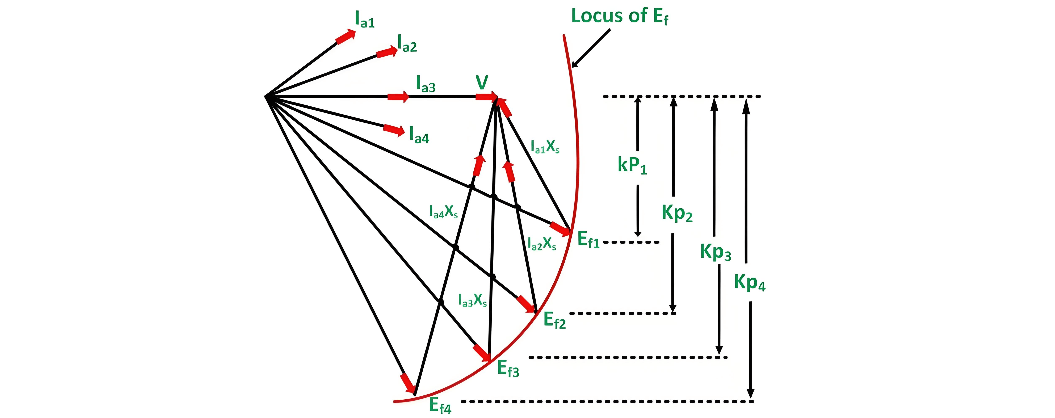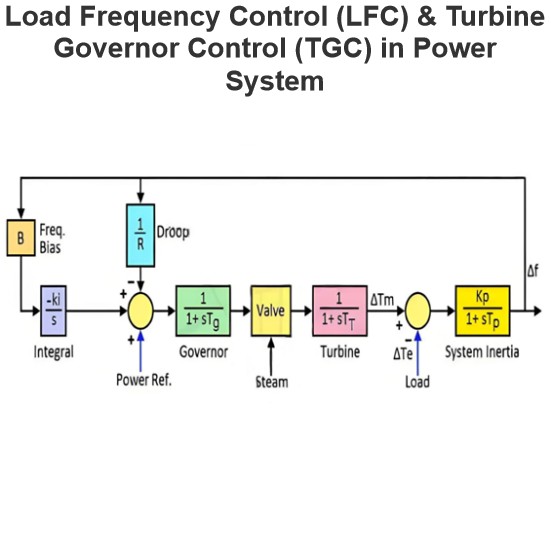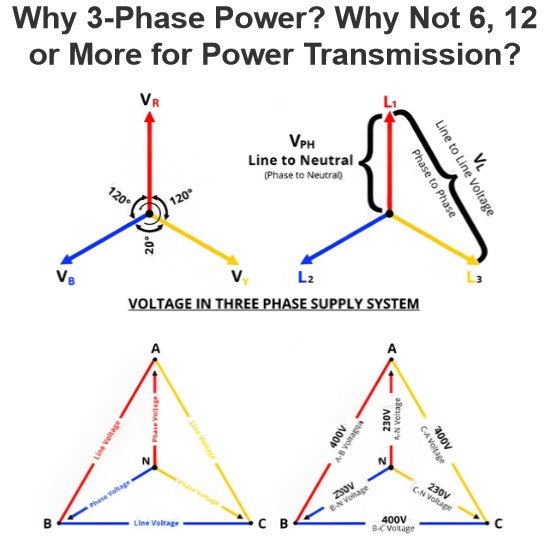As depicted in the figure above, as the load increases, the quantity jIaXs steadily grows, and the equation V=Ef+jIaXs
remains valid. Concurrently, the armature current also rises. The power factor angle undergoes a transformation with the load variation; it gradually becomes less leading and then increasingly lagging, as clearly illustrated in the figure.
In summary, when the load on a synchronous motor increases, the following key observations can be made:
- The motor maintains its operation at the synchronous speed.
- The torque angle δ expands.
- The excitation voltage Ef stays constant.
- The armature current Ia drawn from the power supply increases.
- The phase angle ϕ shifts further in the lagging direction.
It's important to note that there is a limit to the mechanical load that a synchronous motor can handle. As the load continues to rise, the torque angle δ keeps increasing until a critical point is reached. At this juncture, the rotor is pulled out of synchronism, causing the motor to come to a halt.
The pull - out torque is defined as the maximum torque that a synchronous motor can generate at the rated voltage and frequency while still maintaining synchronism. Typically, its values range from 1.5 to 3.5 times the full - load torque.

















